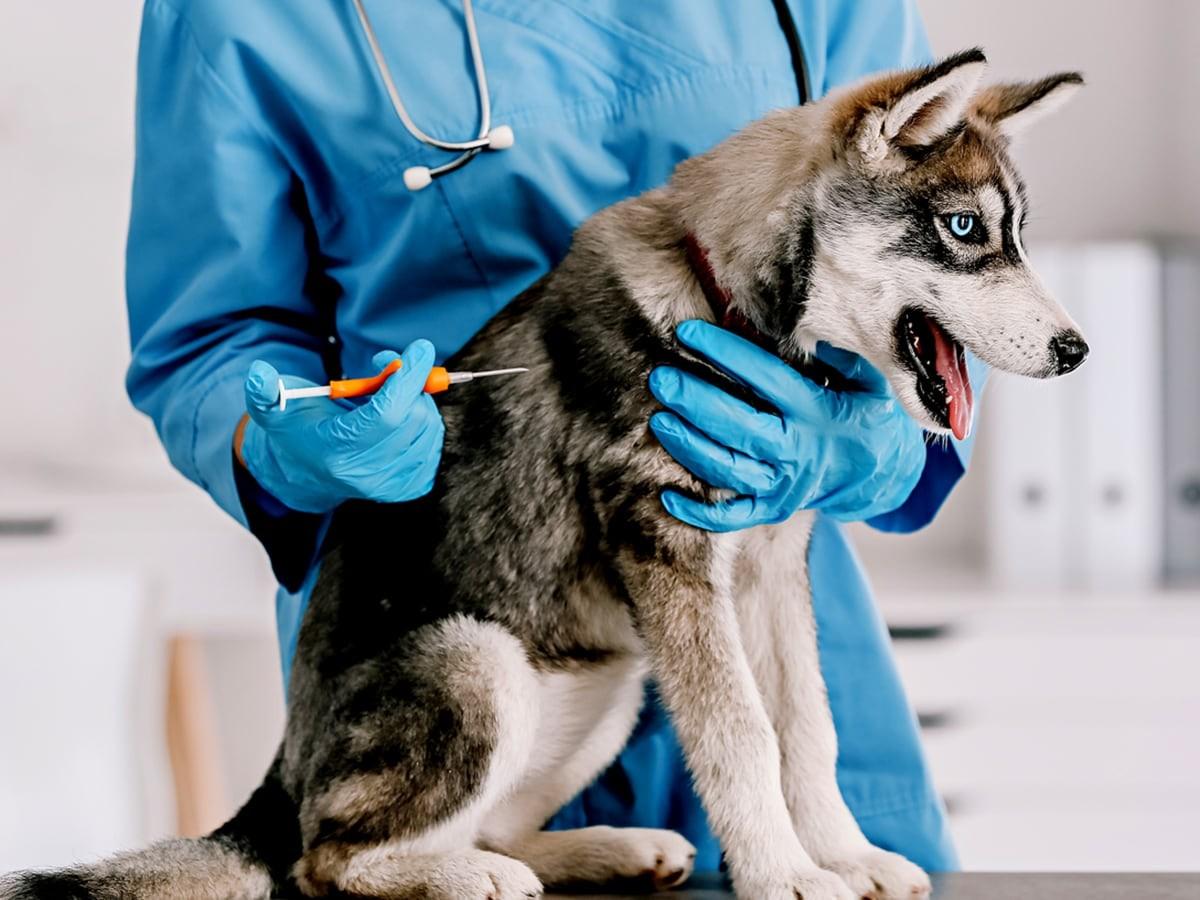Bringing home a new dog or cat is a special time filled with excitement, bonding, and a little planning. One of the first health and safety choices you’ll likely be asked about at the vet is, “Would you like to microchip your new companion?”
We’re here to help you confidently say yes. Microchipping is a small, quick procedure that can have a big impact on your pet’s safety and your peace of mind. In this blog, we’ll cover how pet microchips work, why they matter, how to get one, and how Spot Pet Insurance helps make it easier.
What Is a Pet Microchip and How Does It Work?
A pet microchip is a tiny electronic chip—about the size of a grain of rice—placed just under your pet’s skin, typically between their shoulder blades. It holds a unique ID number that links to your contact information in a secure national database.
When a lost pet is taken to a vet or animal shelter, a scanner reads the microchip and retrieves the ID number. The chip company is then alerted and can reach out to you directly, as long as your contact info is up to date.
Important: Microchips are not GPS devices. They only work when scanned by someone who finds your pet.
Unlike collars or ID tags that can break or fall off, a microchip is always with your pet and provides a secure backup method of identification.
Top Benefits of Microchipping Your Pet
Microchipping is a smart way to prepare for life’s unpredictable moments. Here are three important reasons to get your pet microchipped:
Reason 1: Escape or Runaway Situations
It happens more often than you think—a door left ajar, a loose fence board, or a spooked pet on a walk. In those moments, a microchip can be the key to a safe return home.
Microchipped dogs are returned to their owners 52% of the time, and microchipped cats are returned 40% of the time - significant improvements from the return rates for dogs and cats without microchips - 22% and 20%, respectively1.
Reason 2: Natural Disasters and Emergencies
Storms, fires, and other emergencies can separate pets from their families in an instant. When collars and tags fall off or get lost, a microchip acts as a permanent ID that gives rescuers a way to get in touch with you.
Reason 3: Medical Needs and Conditions
If your pet needs medication or has a chronic illness, time is critical. A microchip helps vets identify your pet and notify you quickly if your pet is found, so you can get them the care they need without delay.
How to Get Your Pet Microchipped: Step-by-Step
Getting your pet microchipped is fast and easy. Here’s what to expect:
Step 1: Check Your Insurance Coverage
Spot Pet Insurance covers microchipping under all base plans—Accident-Only and Accident & Illness. This helps reduce or even eliminate the out-of-pocket cost, which averages between $25 - $60 for dogs2, and $45 for cats3.
Step 2: Book a Vet Appointment
Most veterinary clinics offer microchipping during routine visits. Let your vet know ahead of time. You can also check with local shelters or rescue organizations for special events.
Step 3: Have the Chip Implanted
The chip is injected under the skin in just seconds. It’s similar to a vaccine shot and doesn’t require anesthesia.
Step 4: Register the Microchip
A microchip is only useful if your contact info is registered and current. Follow the chip provider’s instructions to submit your phone number and address, and remember to update it if anything changes.
Step 5: What Happens If Your Pet Gets Lost
If someone finds your pet, they’ll likely take them to a vet or shelter to check for a chip. Once scanned, the microchip ID links to your contact info so you can be notified and reunited.
Why Spot Pet Insurance Covers Microchipping
Spot believes in protecting pets through prevention, and microchipping is a perfect example of that. It’s one of the easiest, most affordable ways to keep your pet safe, which is why every base plan from Spot includes coverage for microchipping.
You get support for more than just emergencies—we help with everyday protections, too. Explore how Spot can support you and your pet from the very beginning. See Spot Pet Insurance Plans.
A Tiny Chip, A Huge Impact
When it comes to protecting your pet, some of the best decisions are also the simplest. Microchipping only takes a few seconds, but can make all the difference if your pet ever goes missing. Nearly 10 million pets are lost every year in the United States, and microchipping your pet significantly increases the chance that they will be returned to you1.
It’s quick. It’s safe. And when paired with Spot Pet Insurance, it’s covered. Take that step today—your future self may thank you.
FAQ: Pet Microchipping Questions Answered
Q: Can I track my pet with a microchip?
A: No, microchips do not have GPS. They only work when scanned by a vet or animal shelter.
Q: How much does it cost to microchip a dog?
A: On average, microchipping costs $25 - $60 for dogs2, and $45 for cats3. Spot Pet Insurance includes microchip coverage with all base plans.
Q: How long do microchips last?
A: Pet microchips are designed to last a lifetime and do not require batteries or maintenance.
Key Takeaway
Microchipping is a fast, affordable, and effective way to help protect your pet in case they ever get lost. It offers permanent ID, peace of mind, and better odds of a safe return home.

With 15 years as a dog and cat parent, my pet articles are a mix of humor and firsthand experience - proof that the best stories often come with paws and purrs.











